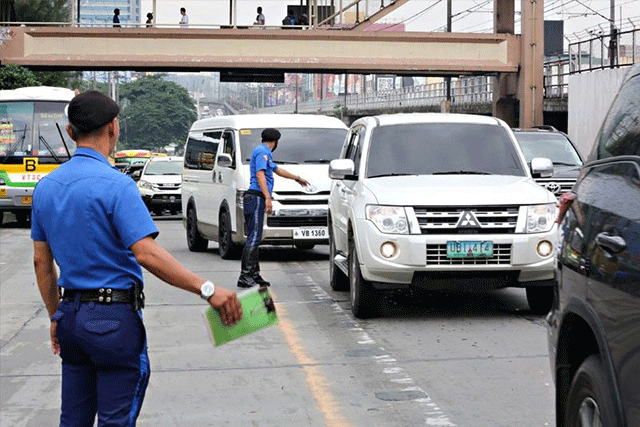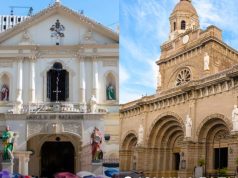
House Speaker Alan Peter Cayetano attributed the worsening traffic crisis in Metro Manila to progress, a belief that was similarly held by Mar Roxas when he was still the Interior secretary.
At a press conference at New Clark City in Tarlac on October 16, the Taguig-Pateros representative was asked whether or not he thinks foreigners will experience road congestion during the 2019 Southeast Asian Games in November.
Cayetano answered that while heavy traffic is experienced everywhere around the world, it is a “product” of the country’s supposed economic boom.
“First of all, hindi lang naman sa Pilipinas ang may traffic; may traffic naman talaga sa buong mundo. It’s no excuse, but the irony kasi (is), traffic is also a product of your own success,” he said, as quoted by reports.
“‘Pag maganda ‘yung ekonomiya, may pambili ng sasakyan ang mga tao,” Cayetano added.
He mentioned, however, that he is hoping the development of cities like New Clark in Tarlac would help decongest Metro Manila.
His remarks baffled some Filipinos but it was not the first time that traffic congestion was perceived as a sign of supposed economic progression.
In 2015, then-Interior Secretary Mar Roxas also said that congestions on major metropolitan roads was a problem that “arises from prosperity.”
Speaking at an annual convention of the Philippine Sugar Technologists Association Inc. in Cebu in August that year, Roxas said that 2014 saw an increase of 260,000 vehicles plying on the road.
“This is a problem in a sense that arises from prosperity. Because there is money. Because there is (an) economic activity,” he said, as quoted by reports.
“When I was in DTI (Department of Trade and Industry), 60,000 vehicles a year was a big year. That was about 12 years ago. Today, 260,000 vehicles last year, 300,000 vehicles projected this year, and 10 percent to 15 percent projected into the future,” Roxas added.
He served as the DTI secretary from 2000 to 2003.

Then-Rep. Leni Robredo (Camarines Sur, Third District), who served as Roxas’ running mate during that time for the 2016 presidential elections, disagreed with his statements and pointed out that “more progressive (countries) have less traffic.”
What traffic congestion actually signifies
When Filipinos read Cayetano’s remarks on traffic congestion, they listed down some factors which they think contributes to the problem, being part of the commuting public.
A Reddit user pointed out that first-world countries like Japan, Singapore and some nations in Europe do not suffer from traffic crisis despite having progressive economies.
“Then explain most countries in Europe, Japan and Singapore,” user ‘meiji626’ wrote.
“Traffic is caused by poor governance, horrible policies and lack of urban planning,” the user added.
Another Reddit user said that if the government attributes heavy traffic to a progressive economy, it should have the means to improve programs on transportation and road safety, among others.
“True, pero sana expected ng government na lalaki ang number ng vehicles due to ‘progressing economy,’ sana naman regular and improving ‘yung programa hinggil sa transportasyon, road safety and worthiness at higit sa lahat, public transportation in which mas malaking (percentage) ng mga tao ang gumagamit,” user ‘FueledwCaffeine’ said.
Top Gear Philippines in September reported that the Metropolitan Manila Development Authority has identified the top causes of traffic congestion in the metro.
According to the agency, these are “saturated demand, mixed traffic with pedestrians, boarding and alighting practices of public utility jeepneys at intersections, unruly driving behavior” and “illegal roadside parking.”
MMDA culled the data from Metro Manila’s local government units.
For a transportation and urban planning expert, however, the factors run much deeper.
In an interview with GMA News Online, Primitivo Cal, who is a former executive director at UP Planning and Development Research Foundation Inc., said that there is traffic crisis in Metro Manila for the following reasons:
- Rapid urbanization is primarily concentrated in Metro Manila only;
- There is a mono-centric urban form where most of the country’s business districts are located in Metro Manila;
- The country’s rail transit network is limited to three trains only (LRT-1, LRT-2 and MRT-3);
- The ratio of Metro Manila’s roads to the number of vehicles is low;
- There is an institutional weakness due to the lack of a proper traffic czar who is supposed to supervise all transport-related agencies and improve coordination in solving the traffic and transportation problem.
Cal suggested that the government should encourage the development of business centers in other areas and embrace telecommunication instead of personal contact to reduce the need to go out in the metro.
He added that there must be a boost to the capacity of public transport and an expansion of the networks of highways in the country. — Artwork by Uela Altar-Badayos









